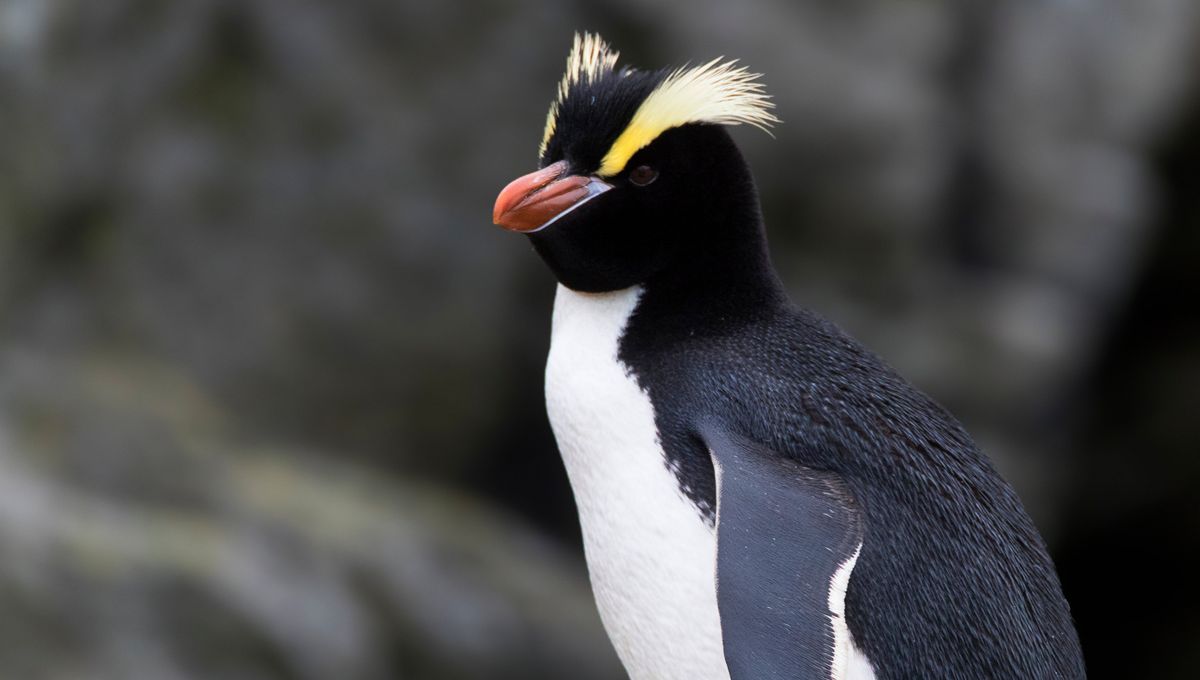
Erect-crested penguins (Eudyptes sclateri) might be a little under the radar when it comes to the penguin world. However, they have one pretty cool and unusual trick up their little penguin sleeves. These birds lay essentially one and half eggs each year in a bizarre breeding strategy.
The least studied of all the penguin species, they exist on just two island groups in New Zealand: the Antipodes and Bounty Islands. They were nicknamed “the forgotten penguins” due the inaccessibility of these places by researcher Lloyd Davis, who is first author of a 2022 study. The data in the study came from information collected in 1998, and it’s still the most detailed research available on their breeding behavior and hormones.
Erect-crested penguins are within a group of seven species belonging to the genus Eudyptes. All penguins in the genus lay clutches of two eggs in the breeding season. What makes the erect-crested penguins special is that the first egg never seems to survive. The penguins have what is called “extreme reversed egg-size dimorphism”, where the first egg that they lay is much smaller than the second egg. What is even more unusual is that the first egg is lost either before or on the day that the second egg is laid, and no first-laid egg has been seen to survive longer than seven days after the second egg joined the nest.
The team led by Davis learned this while studying a colony between September 29 and October 22, 1998. They watched the colony for up to 12 hours a day during this time, which coincided with the courtship and laying periods. The team was also able to measure the egg sizes of a selection of both first-laid eggs and second-laid eggs.
The team observed many instances of the first-laid egg being rolled out of the nest, either deliberately by the penguins or accidentally. Penguin nests are very simple with barely any nest materials, so the team came up with an experiment to see if they could keep the first-laid egg in the nest for longer by surrounding it with a ring of stones. This initially improved the number of eggs kept in the nests, but in the end all the first-laid eggs were lost, regardless of whether the nest had been ringed in stones or not.
The team think the penguins reject the first egg because it is formed while the birds are still migrating, and therefore is smaller and less robust than the second egg, formed on the breeding island.
The researchers also discovered that around half of the penguin pairs barely bother to incubate the first-laid egg and use much more time to incubate the larger second egg. The main reason for this is suggested to be that the penguins cannot bring back enough food to feed two chicks and therefore invest much more in the larger egg size of the second-laid egg. The team think that erect-crested penguins have the largest difference in size of eggs laid in the same period of any bird species.
“The problem is that you can’t lay a second egg until you’ve laid a first egg,” Davis told BBC Discover Wildlife. “So all you can do is reduce the investment in the first egg as much as you can.”
Source Link: Endangered "Forgotten" Penguins Lay 1.5 Eggs At A Time In Bizarre Breeding Strategy